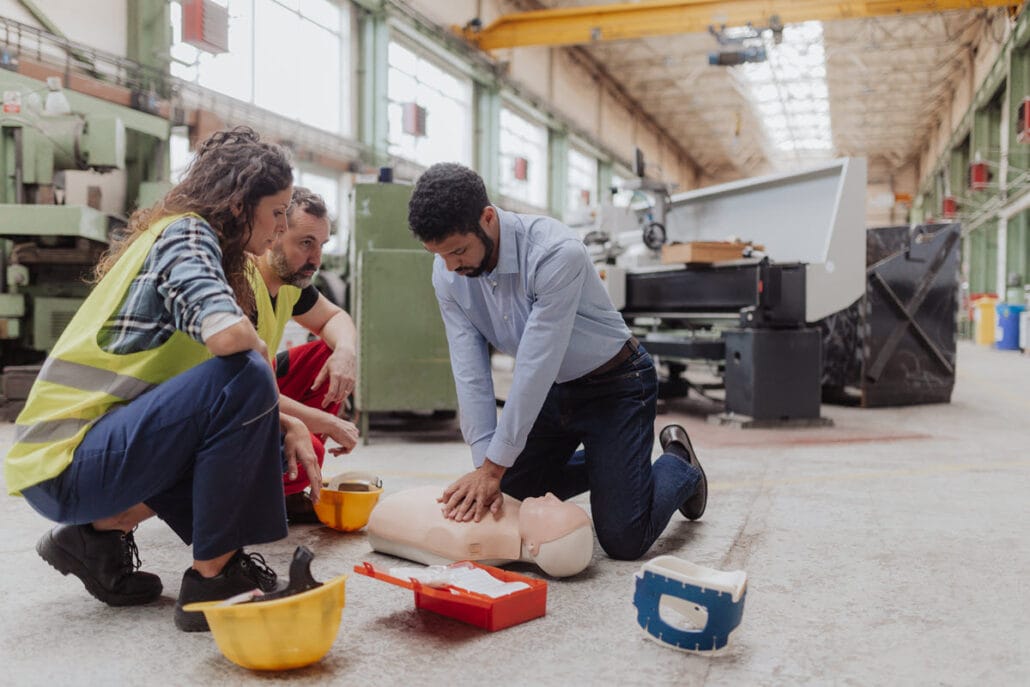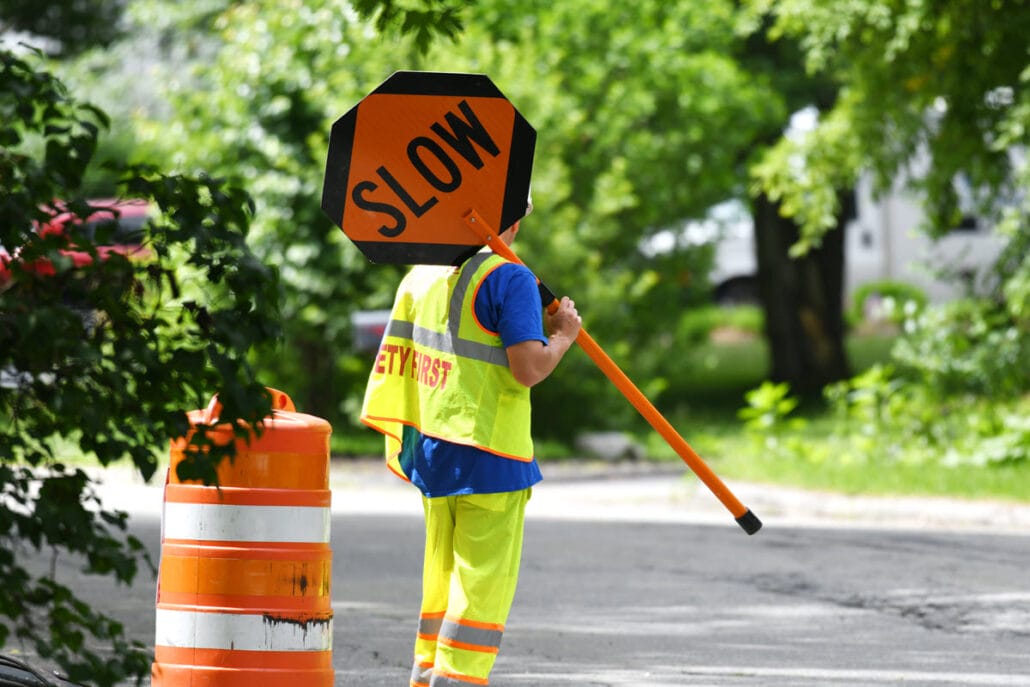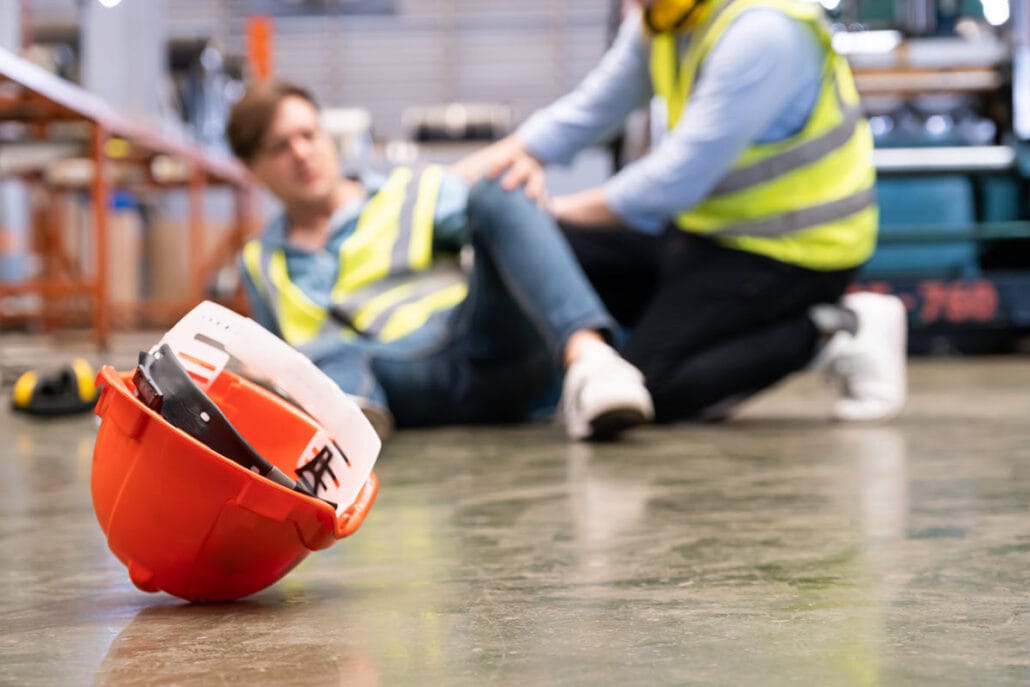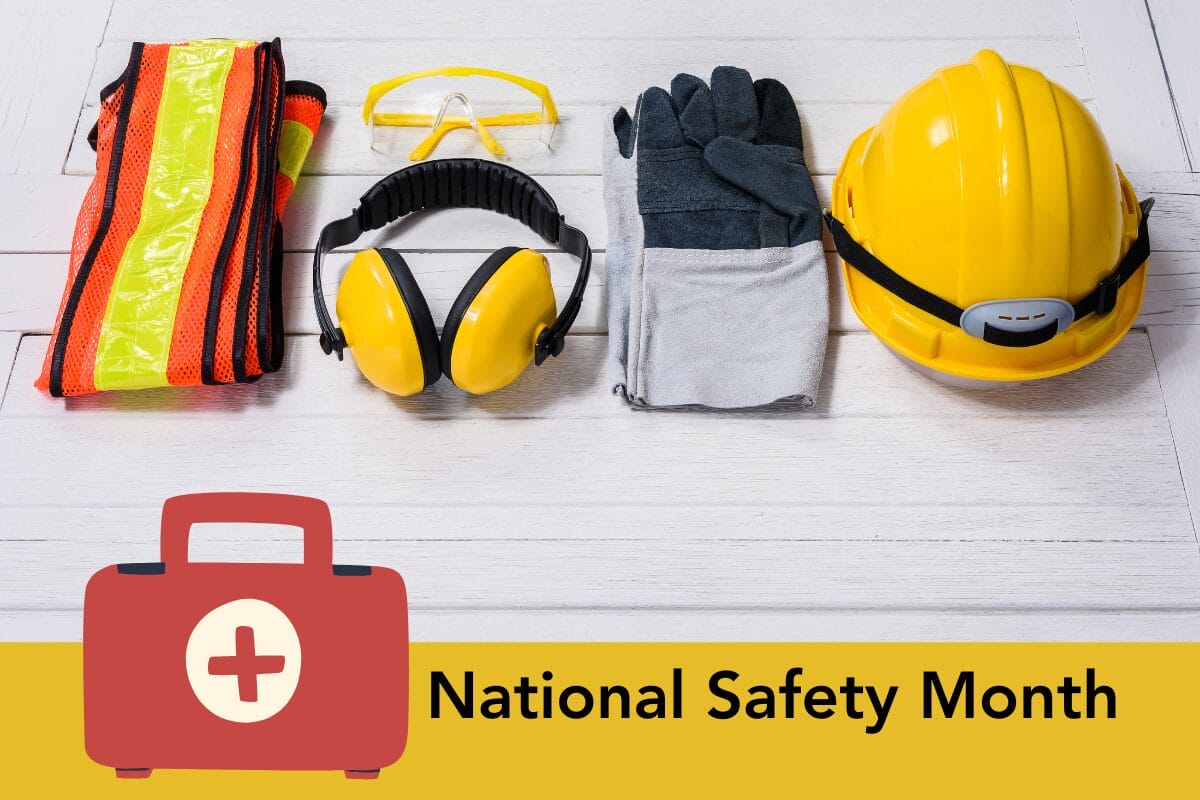National Safety Month, celebrated in June each year, spotlights the critical issue of workplace safety, drawing attention to preventive strategies that can avert injuries and save lives. This month is a call to action for creating safer work environments and promoting year-round vigilance. Dive in and learn how you can implement these lifesaving practices at your workplace.
Key Takeaways
- National Safety Month, celebrated in June and initiated by the National Safety Council, is an annual event aimed at promoting safety awareness and preventing injuries and deaths through a culture of safety that extends throughout the year.
- The NSC has identified key focus areas for National Safety Month 2024, which cover safety engagement, roadway safety, risk reduction, and prevention of slips, trips, and falls. The NSC then provides tools and resources for effective safety training and hazard recognition related to the focus areas.
- Emphasizing the role of technology in improving workplace safety, innovative tools like autonomous mobile robots, biometric authentication systems, and predictive analytics are instrumental in minimizing risks and creating safer work environments year-round.
Celebrating National Safety Month: A Call to Action

Established in June 1996 by the National Safety Council (NSC), National Safety Month stands as a beacon to highlight safety issues in all aspects of life. The primary objective? Elevating awareness of safety’s importance and mitigating preventable injuries and deaths across the nation.
However, the mandate stretches beyond simple awareness. It implores individuals to cultivate a safety-conscious culture, giving significant importance to preventive measures for well-being in personal and professional spaces. The emphasis is not merely on safety during the summer months, but on year-round life preservation, hazard recognition, and minimizing health risks, including heat exhaustion and heat related illness.
The specially themed month serves as a compelling reminder that accidents are preventable. It underscores the fact that safety commitments shouldn’t be confined to just the annual observance but should be an ongoing priority. After all, safety is a perpetual journey rather than a finite destination.
Weekly Focus Areas: Addressing Key Safety Challenges

As the foremost safety organization, the National Safety Council has pinpointed key weekly focus areas for National Safety Month 2024, fundamental to worker safety and leading safety initiatives. These include:
- Safety Engagement
- Roadway Safety
- Risk Reduction
- Slips, Trips, and Falls
The first week usually sets the tone for the rest of the month, emphasizing the importance of safe work practices and recognizing hazards.
The NSC offers a range of tools and resources for addressing safety challenges, including:
- Weekly games and videos
- Articles and facts and figures
- Augmented Reality (AR) technology for interactive and engaging safety training
- Freely accessible resources
- Additional materials like webinars and sample communications available to NSC members.
These weekly topics are not just themes; they represent real-life safety challenges faced by workers. They serve as an opportunity for every safety director and employee to learn, understand, and implement safety measures that can literally save lives.
In addition to the NSC’s promotions, National CPR and AED awareness week takes place the first week of June each year. While this is not sponsored by the National Safety Council, the two programs coincide with each other, offering yet another opportunity for employers to empower individuals to respond to injury and help employees stay safe.
Safety Engagement
In the context of the workplace, safety engagement means employees are committed to the safety goals of the company. They understand the organization’s safety objectives and are personally invested in achieving them. But engagement in safety goes beyond mere understanding; it’s about active participation and ownership.
The expectations for worker safety and engagement have been elevated this year. Employers must tailor their safety training to engage employees in situations they might encounter, keeping workers safe. Rather than mundane slideshow presentatations, creating safety games can add life to your safety program while enforcing its goals.
It’s not just about safety protocols either. Rewarding employees for demonstrating their knowledge of safety topics and incentivizing them to report accidents can also encourage engagement. Presented in this way, workers are more apt to identify potential hazards and take appropriate actions to mitigate risks. They may also be less apt to hide an accident if they realize they’ll be rewarded for reporting it rather than blamed for any part they played in its occurrence.
Such a culture of safety engagement significantly impacts a business’s bottom line. But it also extends to mental health and psychological safety, which are integral parts of overall employee wellness. After all, a safe workplace involves not only preventing physical harm but also nurturing a mentally healthy work environment, free from mental distress.
Roadway Safety

Driving is a part of many people’s daily routine. But it’s also the leading cause of work-related deaths each year in the United States, accounting for nearly 40% of deaths on the job. In 2022 alone, more than 37,000 people were injured, and nearly 900 people were killed in active road construction work zones, many of whom were road construction workers. These incidents contribute to the alarming rate of workplace fatalities and unintentional injury-related death in the country.
In light of these hazards, organizations such as the National Safety Council and OSHA are committed to ensuring employers prioritize road safety within their health and safety programs. Efforts are being made to protect:
- drivers
- passengers
- roadside workers
- cyclists
- pedestrians
These efforts include hosting the National Work Zone Awareness Week to increase public awareness, and implementing policies for safe driving practices.
Roadway safety is not just about the individual behind the wheel. It’s about creating a culture of safety and hazard recognition in the workplace – beyond national safety month – where every worker understands their responsibility and plays their part in saving lives.
Risk Reduction

Risk reduction is a critical aspect of workplace safety. It involves different processes, controls, and measures designed to reduce risk that organizations and workers face regularly. Basic steps in risk reduction include:
- Risk assessment & identification
- Risk mitigation
- Preventive measures
- Contingency planning
- Monitoring & review
Implementing these steps can significantly enhance workplace safety and reduce risks, leading to a decrease in workers’ compensation insurance claims. Moreover, it also helps businesses prevent workplace injuries and illnesses, improve compliance with laws and regulations, and reduce costs.
Employers should analyze the following—often overlooked—health risks when considering preventative safety measures:
- Heat exhaustion, heat cramps, and other heat related illness
- Eye safety
- Drugs and substance abuse
- Mental distress
Risk reduction goes beyond adhering to a set of practices. It involves fostering a culture where safety takes precedence, hazards are promptly identified and addressed, and every worker participates actively in maintaining a working environment that keeps workers safe.
Slip, Trip, and Fall Prevention Tactics

Slips, trips, and falls might seem like minor incidents, but they can lead to serious injuries in the workplace. The NSC states that falls from elevation are the second leading cause of unintentional injury-related death for workers after highway crashes. In addition to falls from ladders, scaffolding, and other equipment, common hazards leading to trips, slips and fall incidents include:
- Slippery surfaces
- Seasonal conditions
- Spills
- Uneven walkways
- Poor lighting
- Inappropriate footwear
- Heat related illnesses
Recognizing these hazards is the first step towards their prevention and an essential aspect of emergency preparedness for reducing slips.
Engineering controls can play a significant role to reduce the risk of workplace falls. Installing slip-resistant flooring, ensuring proper drainage, and improving lighting can all help prevent slips, trips, and falls. Adequate ventilation and areas to keep cool can mitigate heat related illnesses that can result in falls. Alongside this, adopting safe work practices such as promptly cleaning spills, removing snow and ice, and maintaining orderly work areas are critical.
Lastly, equipping workers with personal protective gear like well-fitted, slip-resistant shoes, and maintaining fall protection equipment is integral to preventing falls in the workplace. It’s not just about reducing slips, trips, and falls, but about creating a workplace where every worker feels safe and secure, and where we actively protect workers.
The Essential Role of Safety Directors
Safety Directors, or the human resources department itself, hold a pivotal role in cultivating a secure work environment. They are responsible for creating, coordinating, and executing occupational health and safety policies and procedures to enhance the safety operations within an organization. But their role extends beyond policy formulation to ensuring organizational compliance with safety and health laws, regulations, codes, and rules at various levels.
They provide critical technical and administrative guidance to safety and health committees, ensuring effective safety measures and programs are in place. They have the authority to halt operations that may endanger employees or equipment, underscoring their essential role in maintaining workplace safety.
More importantly, Safety Directors play a crucial role in fostering a psychologically safe work environment where employees feel supported in seeking help and giving feedback. Indeed, a safe workplace encompasses not only physical safety but also mental well-being.
Tech Innovations in Safety: Saving Lives Year-Round

Technology persistently transforms diverse areas of our lives. This is also true when it comes to workplace safety and health. Here we discuss just a few of the latest technological enhancements aimed at workplace safety.
Autonomous Mobile Robots (AMRs) used in warehouses and manufacturing facilities contribute not only to efficiency, but also to safety. They can detect hazards when handling goods transportation, reducing manual handling accidents.
Biometric authentication has revolutionized access control in the workplace. By utilizing unique physiological features such as fingerprints or facial recognition, improved authentication ensures only trained and authorized personnel can access certain areas, mitigating the risk of accidents.
Wearable technology such as smartwatches, two-way communication headsets, and cooling vests are becoming popular devices, with their initial adoption in the construction industry. Wireless panic buttons are used regularly in hospitality, healthcare, and education. While they might not prevent accidents themselves, they ensure aid is provided immediately, reducing the extent of the injury.
One only needs to visit their favorite online app store to find a plethora of safety apps in today’s market. Checking heart rates, blood pressure, sleep quality, and more are common apps for individuals. For businesses, apps offer environmental information. They can:
- Analyze the electrical grid
- Determine the proper angle of a ladder
- Detect the presence of dangerous chemicals
- Measure tension when carrying heavy loads
- Measure noise levels
- Predict fatigue
The above are just the tip of the iceburg. New technological apps to help make workplaces safer are big business in 2024. These advancements transcend mere safety improvement; they’re about preserving lives throughout the year.
Summary
National Safety Month serves as a timely reminder of our shared responsibility towards safety, be it at home or in our workplaces. The focus areas for 2024 provide us with an opportunity to learn, engage, and take proactive measures to improve safety in our workplaces – from reducing workplace injuries to ensuring roadway safety to preventing slips, trips, and falls.
However, the journey towards a safer workplace is not limited to the summer months. It’s a year-round commitment that requires continuous effort, engagement, and learning. So, let’s use this special month as a stepping stone towards a safer future and make safety not just a priority but a way of life.
Frequently Asked Questions
What is the main goal of National Safety Month?
The main goal of National Safety Month is to raise awareness about safety issues and decrease preventable injuries and deaths nationwide, promoting a safer environment for everyone.
What are the focus areas for National Safety Month 2024?
The focus areas for National Safety Month 2024 are (1) Safety Engagement, (2) Roadway Safety, (3) Risk Reduction, and (4) Slips, Trips, and Falls. It is essential to prioritize these areas to promote safety and health for everyone.
What is the National Safety Council?
The National Safety Council (NSC) is the nation’s leading safety advocate, playing an important role in encouraging safety and health in working environments. Through education and resources, the non-profit helps employers mitigate injuries and deaths in the workplace.
How does technology contribute to workplace safety?
Technology contributes to workplace safety through innovations such as Autonomous Mobile Robots, biometric authentication, wearable technology, and safety apps. They help detect hazards, improve access control, and prevent or anticipate potential safety threats. This ultimately leads to a safer work environment for everyone.
What is the role of a Safety Director in an organization?
The role of a Safety Director in an organization is to create, coordinate, and execute occupational health and safety policies and procedures, ensuring compliance with safety laws and fostering a psychologically safe work environment. In the absence of a safety director, the HR department is generally tasked with workplace safety.
How can slips, trips, and falls be prevented in the workplace?
To prevent slips, trips, and falls in the workplace, it’s important to identify the hazards, implement prevention controls, adopt safe work practices, and provide personal protective equipment.


